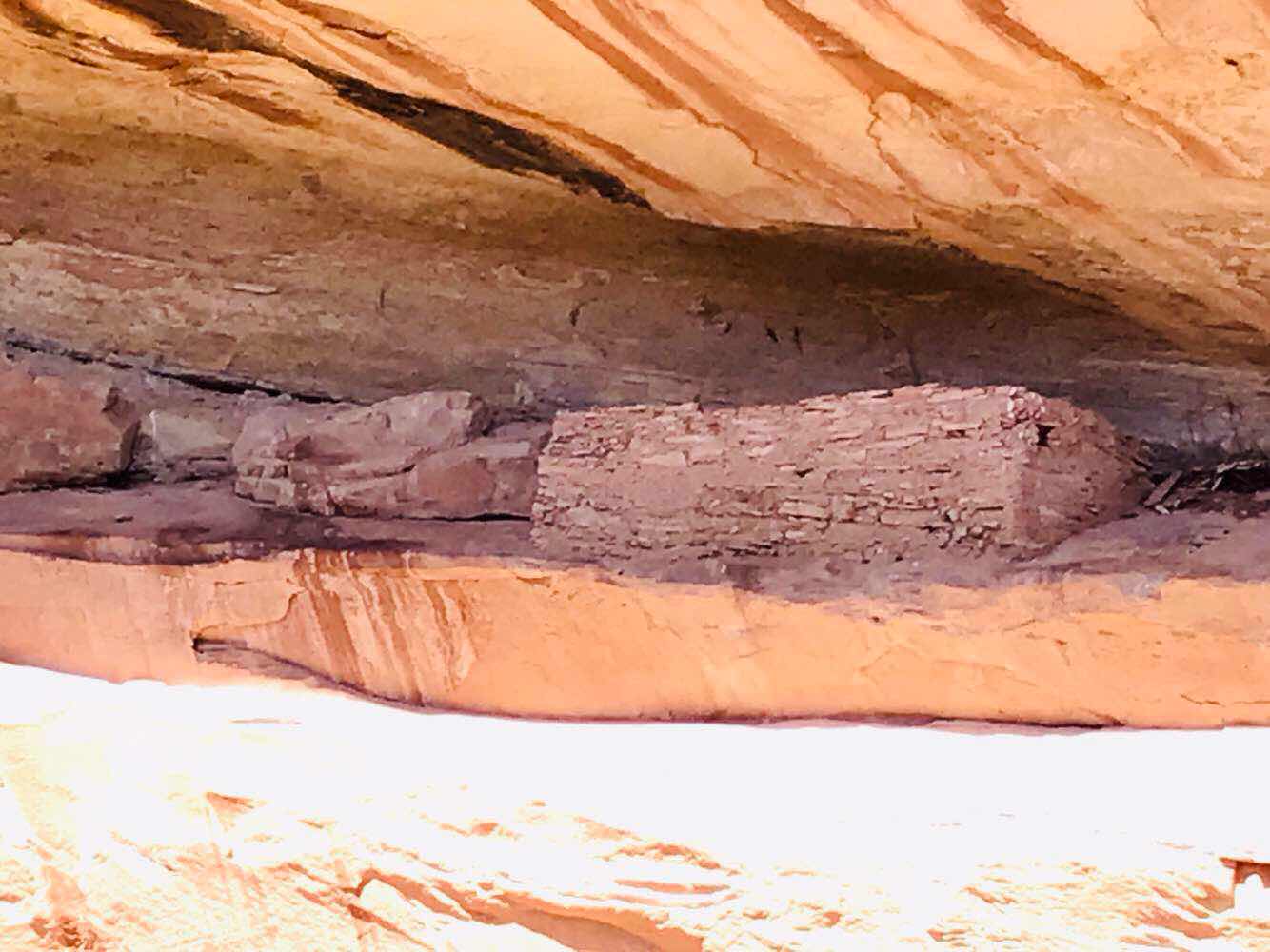Here is my recording of the Double Stack Ruins on Butler Wash near Bluff, UT. We didn’t follow the hike from the AllTrails trailhead listed but one over due to Butler Wash crossing problems.
I press record on my IPhone on the AllTrails App to track our route. This is very important when washes and rock surfaces start to look alike. It allows you to know exactly your trek and how to get back to your vehicle. This is so important when it comes to crossing Butler Wash. It rained a lot and washes over others tracks and leaves mud. It’s hard enough to walk through fresh mud, so you want to walk the same way back as the surface where you walked has dried a bit.
Above is a good example of one of the cuts in Comb Ridge. Kind of the cut between the teeth. A canyon that ends with a wall in some cases and sometimes rises up to overlook Comb Wash to the west.
With so many of these cuts in the ridge there are numerous marked and unmarked ruins and petroglyphs. This one is labeled. This time of year there are many people out exploring like we did.

There were a couple of these shelters on trail to cave/ruins. We don’t know about them but figured I’d take a picture. Although they may not be 800 AD we did find sticks and corn cobs that did date back that far.

Comb Ridge has many carve-outs or caves where native activity may be still present or may be non existent. A look into most iscrequired to figure out the mystery. It’s the fun of exploring. Joanne is good at picking out petroglyphs, Susan is good with finding pottery chards. I find the way up as most require climbing. I go up and check things out and let Joanne and Susan know what there is to see.

Some ruins you can get up close to see and sometimes it’s too dangerous to climb to them.

When you do get close and you have seen a few you can see that the natives shared buildings styles.

They were good st using natural features in the rock to assist with building.

In this area it is popular to see hand paintings.

We often spend a half hour per ruin to look around and Joanne looks for the detailed markings on the rock walls.

Here is a look back out the comb
There were a couple of these shelters on trail to cave/ruins. We don’t know about them but figured I’d take a picture. Although they may not be 800 AD we did find sticks and corn cobs that did date back that far.
Comb Ridge has many carve-outs or caves where native activity may be still present or may be non existent. A look into most iscrequired to figure out the mystery. It’s the fun of exploring. Joanne is good at picking out petroglyphs, Susan is good with finding pottery chards. I find the way up as most require climbing. I go up and check things out and let Joanne and Susan know what there is to see.
Some ruins you can get up close to see and sometimes it’s too dangerous to climb to them.
When you do get close and you have seen a few you can see that the natives shared buildings styles.
They were good st using natural features in the rock to assist with building.
In this area it is popular to see hand paintings.
We often spend a half hour per ruin to look around and Joanne looks for the detailed markings on the rock walls.
Here is a look back out the comb
You have to like exercise through hiking and climbing. There are so many places and things to see and do.
Brent
macaloney@hotmail.com